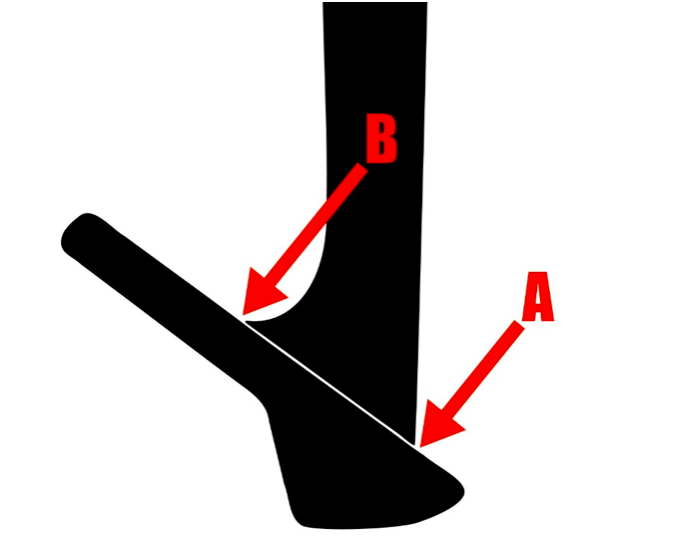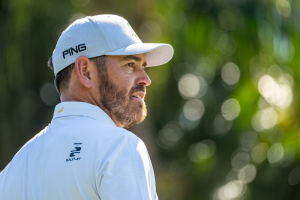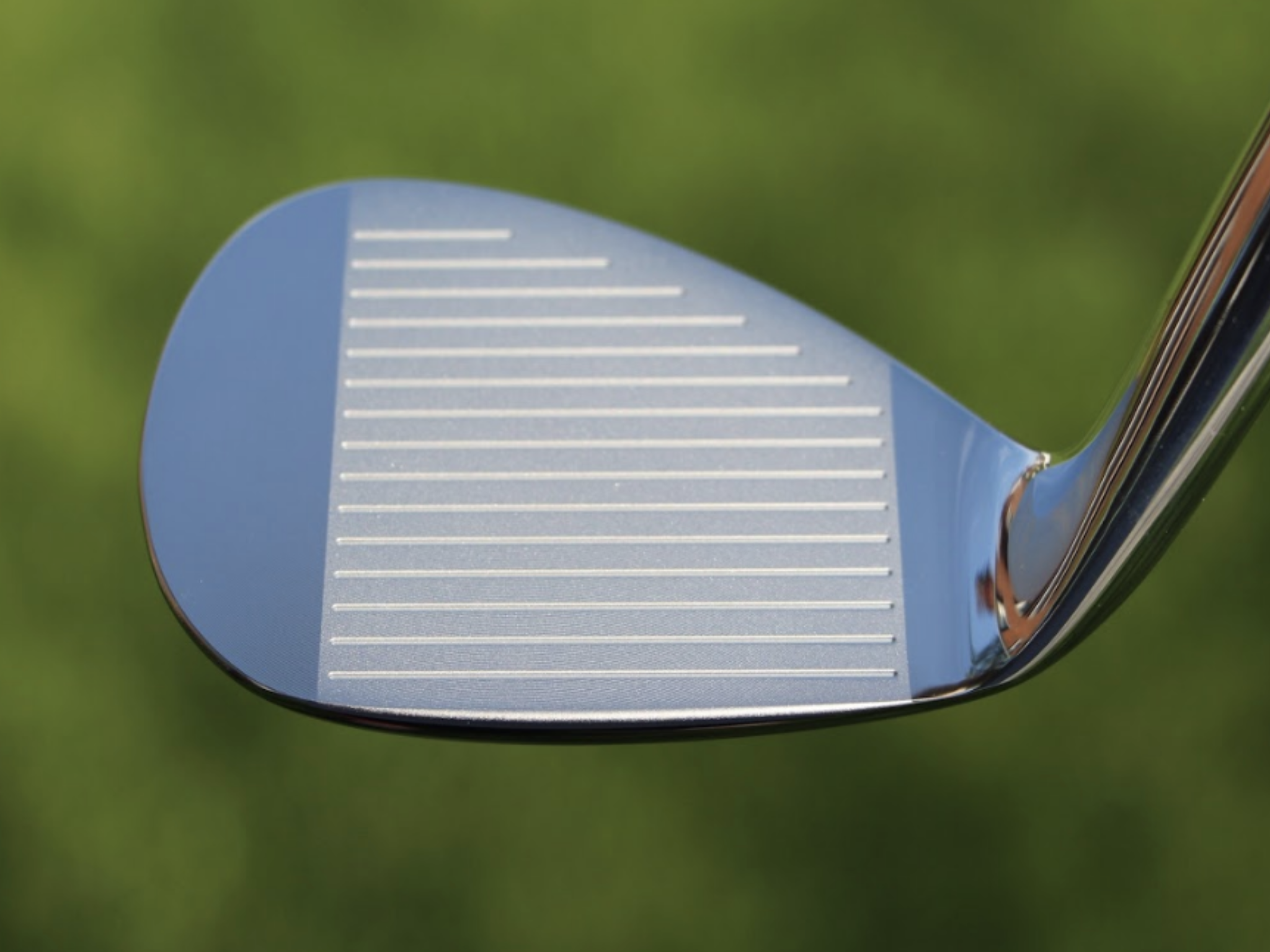Opinion & Analysis
The Wedge Guy: Why wedge mastery is so elusive

I have conducted numerous surveys of golfers over my 40-year golf industry career, because I have always believed that if you want to know what people are thinking, you simply have to ask them.
As a gearhead for wedges and a wedge designer over the past 30 years, most of my research and analysis is focused on these short-range scoring clubs and how golfers use them. What this research continually tells me is that most golfers—regardless of handicap–consider the wedges the hardest clubs in the bag to master. That’s because they are. I would even go so far as to say that the difficulty of attaining mastery even extends to the best players in the world.
Watching the Genesis Open this past weekend, for example, it seemed like these guys were hitting wedge approaches on nearly every hole. And while there were certainly many shots that covered the flag—like Max Homa’s approach on 18–there were also a great number that came up woefully short. Not what you would expect when a top-tier tour professional has a sand or gap wedge in their hands.
The simple fact is that wedges are the most difficult clubs in our bags with which to attain consistent shotmaking mastery, and that is because of the sheer design of the clubhead itself. For clarity of this article, I’m talking about those full- or near full-swing wedge shots, not the vast variety of short greenside shots we all face every round. To get mastery of those shots (like the tour pros exhibit every week), you simply have to spend lots of time hitting lots of shots, experimenting and exploring different techniques. There are no shortcuts to a deadly short game.
But today I’m talking about those prime opportunities to score, when you have a full- or near-full swing wedge into a par-five or short par four. We should live for those moments, but all too often we find ourselves disappointed in the outcome.
The good news is that’s not always all your fault.
First of all, you must understand that every wedge shot is, in effect, a glancing blow to the ball because of the loft involved. With 50 to 60 degrees of loft—or even 45 to 48 degrees with a pitching wedge—the loft of the club is such that the ball is given somewhat of a glancing blow. That demands a golf swing with a much higher degree of precision in the strike than say, an 8-iron shot.
I have always believed that most golfers can improve their wedge play by making a slower-paced swing than you might with a longer iron. This allows you to be more precise in making sure that your hands lead the clubhead through impact, which is a must when you have a wedge in your hands. Without getting into too much detail, the heavier, stiffer shaft in most wedges does not allow this club to load and unload in the downswing, so the most common error is for the clubhead to get ahead of the hands before impact, thereby adding loft and aggravating this glancing blow. I hope that makes sense.
The other aspect of wedge design that makes consistent wedge distance so elusive is the distribution of the mass around the clubhead. This illustration of a typical tour design wedge allows me to show you something I have seen time and again in robotic testing of various wedges.

Because all the mass is along the bottom of the clubhead, the ideal impact point is low in the face (A), so that most of the mass is behind the ball. Tour players are good at this, but most recreational golfers whose wedges I’ve examined have a wear pattern at least 2-4 grooves higher on the club than I see on tour players’ wedges.
So, why is this so important?
Understand that every golf club has a single “sweet spot”–that pinpoint place where the smash factor is optimized—where clubhead speed translates to ball speed at the highest efficiency. On almost all wedges, that spot is very low on the clubhead, as indicated by the “A” arrow here, and robotic testing reveals that smash factor to be in the range of 1.16-1.18, meaning the ball speed is 16-18% higher than the clubhead speed.
To put that in perspective, smash factor on drivers can be as high as 1.55 or even a bit more, and it’s barely below that in your modern game improvement 7-iron. The fact is—wedges are just not as efficient in this measure, primarily because of the glancing blow I mentioned earlier.
But–and here’s the kicker–if you move impact up the face of a wedge just half to five-eights of an inch from the typical recreational golfer’s impact point, as indicated by the “B” arrow, smash factor on ‘tour design’ wedges can be reduced to as low as 0.92 to 0.95. That costs you 40 to 60 feet on a 90-yard wedge shot . . . because you missed “perfect” by a half-inch or less!
So, that shot you know all too well—the ball sitting up and caught a bit high in the face—is going fall in the front bunker or worse. That result is not all your fault. The reduced distance is a function of the diminished smash factor of the wedge head itself.
That same half-inch miss with your driver or even your game-improvement 7-iron is hardly noticeable.
- LIKE375
- LEGIT54
- WOW28
- LOL6
- IDHT0
- FLOP2
- OB2
- SHANK6
19th Hole
Vincenzi’s 2024 Zurich Classic of New Orleans betting preview

The PGA TOUR heads to New Orleans to play the 2023 Zurich Classic of New Orleans. In a welcome change from the usual stroke play, the Zurich Classic is a team event. On Thursday and Saturday, the teams play best ball, and on Friday and Sunday the teams play alternate shot.
TPC Louisiana is a par 72 that measures 7,425 yards. The course features some short par 4s and plenty of water and bunkers, which makes for a lot of exciting risk/reward scenarios for competitors. Pete Dye designed the course in 2004 specifically for the Zurich Classic, although the event didn’t make its debut until 2007 because of Hurricane Katrina.
Coming off of the Masters and a signature event in consecutive weeks, the field this week is a step down, and understandably so. Many of the world’s top players will be using this time to rest after a busy stretch.
However, there are some interesting teams this season with some stars making surprise appearances in the team event. Some notable teams include Patrick Cantlay and Xander Schauffele, Rory McIlroy and Shane Lowry, Collin Morikawa and Kurt Kitayama, Will Zalatoris and Sahith Theegala as well as a few Canadian teams, Nick Taylor and Adam Hadwin and Taylor Pendrith and Corey Conners.
Past Winners at TPC Louisiana
- 2023: Riley/Hardy (-30)
- 2022: Cantlay/Schauffele (-29)
- 2021: Leishman/Smith (-20)
- 2019: Palmer/Rahm (-26)
- 2018: Horschel/Piercy (-22)
- 2017: Blixt/Smith (-27)
2024 Zurich Classic of New Orleans Picks
Tom Hoge/Maverick McNealy +2500 (DraftKings)
Tom Hoge is coming off of a solid T18 finish at the RBC Heritage and finished T13 at last year’s Zurich Classic alongside Harris English.
This season, Hoge is having one of his best years on Tour in terms of Strokes Gained: Approach. In his last 24 rounds, the only player to top him on the category is Scottie Scheffler. Hoge has been solid on Pete Dye designs, ranking 28th in the field over his past 36 rounds.
McNealy is also having a solid season. He’s finished T6 at the Waste Management Phoenix Open and T9 at the PLAYERS Championship. He recently started working with world renowned swing coach, Butch Harmon, and its seemingly paid dividends in 2024.
Keith Mitchell/Joel Dahmen +4000 (DraftKings)
Keith Mitchell is having a fantastic season, finishing in the top-20 of five of his past seven starts on Tour. Most recently, Mitchell finished T14 at the Valero Texas Open and gained a whopping 6.0 strokes off the tee. He finished 6th at last year’s Zurich Classic.
Joel Dahmen is having a resurgent year and has been dialed in with his irons. He also has a T11 finish at the PLAYERS Championship at TPC Sawgrass which is another Pete Dye track. With Mitchell’s length and Dahmen’s ability to put it close with his short irons, the Mitchell/Dahmen combination will be dangerous this week.
Taylor Moore/Matt NeSmith +6500 (DraftKings)
Taylor Moore has quickly developed into one of the more consistent players on Tour. He’s finished in the top-20 in three of his past four starts, including a very impressive showing at The Masters, finishing T20. He’s also finished T4 at this event in consecutive seasons alongside Matt NeSmith.
NeSmith isn’t having a great 2024, but has seemed to elevate his game in this format. He finished T26 at Pete Dye’s TPC Sawgrass, which gives the 30-year-old something to build off of. NeSmith is also a great putter on Bermudagrass, which could help elevate Moore’s ball striking prowess.
- LIKE6
- LEGIT1
- WOW1
- LOL0
- IDHT0
- FLOP2
- OB1
- SHANK1
19th Hole
Vincenzi’s 2024 LIV Adelaide betting preview: Cam Smith ready for big week down under

After having four of the top twelve players on the leaderboard at The Masters, LIV Golf is set for their fifth event of the season: LIV Adelaide.
For both LIV fans and golf fans in Australia, LIV Adelaide is one of the most anticipated events of the year. With 35,000 people expected to attend each day of the tournament, the Grange Golf Club will be crawling with fans who are passionate about the sport of golf. The 12th hole, better known as “the watering hole”, is sure to have the rowdiest of the fans cheering after a long day of drinking some Leishman Lager.
The Grange Golf Club is a par-72 that measures 6,946 yards. The course features minimal resistance, as golfers went extremely low last season. In 2023, Talor Gooch shot consecutive rounds of 62 on Thursday and Friday, giving himself a gigantic cushion heading into championship Sunday. Things got tight for a while, but in the end, the Oklahoma State product was able to hold off The Crushers’ Anirban Lahiri for a three-shot victory.
The Four Aces won the team competition with the Range Goats finishing second.
*All Images Courtesy of LIV Golf*
Past Winners at LIV Adelaide
- 2023: Talor Gooch (-19)
Stat Leaders Through LIV Miami
Green in Regulation
- Richard Bland
- Jon Rahm
- Paul Casey
Fairways Hit
- Abraham Ancer
- Graeme McDowell
- Henrik Stenson
Driving Distance
- Bryson DeChambeau
- Joaquin Niemann
- Dean Burmester
Putting
- Cameron Smith
- Louis Oosthuizen
- Matt Jones
2024 LIV Adelaide Picks
Cameron Smith +1400 (DraftKings)
When I pulled up the odds for LIV Adelaide, I was more than a little surprised to see multiple golfers listed ahead of Cameron Smith on the betting board. A few starts ago, Cam finished runner-up at LIV Hong Kong, which is a golf course that absolutely suits his eye. Augusta National in another course that Smith could roll out of bed and finish in the top-ten at, and he did so two weeks ago at The Masters, finishing T6.
At Augusta, he gained strokes on the field on approach, off the tee (slightly), and of course, around the green and putting. Smith able to get in the mix at a major championship despite coming into the week feeling under the weather tells me that his game is once again rounding into form.
The Grange Golf Club is another course that undoubtedly suits the Australian. Smith is obviously incredibly comfortable playing in front of the Aussie faithful and has won three Australian PGA Championship’s. The course is very short and will allow Smith to play conservative off the tee, mitigating his most glaring weakness. With birdies available all over the golf course, there’s a chance the event turns into a putting contest, and there’s no one on the planet I’d rather have in one of those than Cam Smith.

Louis Oosthuizen +2200 (DraftKings)
Louis Oosthuizen has simply been one of the best players on LIV in the 2024 seas0n. The South African has finished in the top-10 on the LIV leaderboard in three of his five starts, with his best coming in Jeddah, where he finished T2. Perhaps more impressively, Oosthuizen finished T7 at LIV Miami, which took place at Doral’s “Blue Monster”, an absolutely massive golf course. Given that Louis is on the shorter side in terms of distance off the tee, his ability to play well in Miami shows how dialed he is with the irons this season.
In addition to the LIV finishes, Oosthuizen won back-to-back starts on the DP World Tour in December at the Alfred Dunhill Championship and the Mauritus Open. He also finished runner-up at the end of February in the International Series Oman. The 41-year-old has been one of the most consistent performers of 2024, regardless of tour.
For the season, Louis ranks 4th on LIV in birdies made, T9 in fairways hit and first in putting. He ranks 32nd in driving distance, but that won’t be an issue at this short course. Last season, he finished T11 at the event, but was in decent position going into the final round but fell back after shooting 70 while the rest of the field went low. This season, Oosthuizen comes into the event in peak form, and the course should be a perfect fit for his smooth swing and hot putter this week.

- LIKE9
- LEGIT2
- WOW0
- LOL0
- IDHT0
- FLOP0
- OB0
- SHANK0
Opinion & Analysis
The Wedge Guy: What really makes a wedge work? Part 1

Of all the clubs in our bags, wedges are almost always the simplest in construction and, therefore, the easiest to analyze what might make one work differently from another if you know what to look for.
Wedges are a lot less mysterious than drivers, of course, as the major brands are working with a lot of “pixie dust” inside these modern marvels. That’s carrying over more to irons now, with so many new models featuring internal multi-material technologies, and almost all of them having a “badge” or insert in the back to allow more complex graphics while hiding the actual distribution of mass.
But when it comes to wedges, most on the market today are still single pieces of molded steel, either cast or forged into that shape. So, if you look closely at where the mass is distributed, it’s pretty clear how that wedge is going to perform.
To start, because of their wider soles, the majority of the mass of almost any wedge is along the bottom third of the clubhead. So, the best wedge shots are always those hit between the 2nd and 5th grooves so that more mass is directly behind that impact. Elite tour professionals practice incessantly to learn to do that consistently, wearing out a spot about the size of a penny right there. If impact moves higher than that, the face is dramatically thinner, so smash factor is compromised significantly, which reduces the overall distance the ball will fly.
Every one of us, tour players included, knows that maddening shot that we feel a bit high on the face and it doesn’t go anywhere, it’s not your fault.
If your wedges show a wear pattern the size of a silver dollar, and centered above the 3rd or 4th groove, you are not getting anywhere near the same performance from shot to shot. Robot testing proves impact even two to three grooves higher in the face can cause distance loss of up to 35 to 55 feet with modern ‘tour design’ wedges.
In addition, as impact moves above the center of mass, the golf club principle of gear effect causes the ball to fly higher with less spin. Think of modern drivers for a minute. The “holy grail” of driving is high launch and low spin, and the driver engineers are pulling out all stops to get the mass as low in the clubhead as possible to optimize this combination.
Where is all the mass in your wedges? Low. So, disregarding the higher lofts, wedges “want” to launch the ball high with low spin – exactly the opposite of what good wedge play requires penetrating ball flight with high spin.
While almost all major brand wedges have begun putting a tiny bit more thickness in the top portion of the clubhead, conventional and modern ‘tour design’ wedges perform pretty much like they always have. Elite players learn to hit those crisp, spinny penetrating wedge shots by spending lots of practice time learning to consistently make contact low in the face.
So, what about grooves and face texture?
Grooves on any club can only do so much, and no one has any material advantage here. The USGA tightly defines what we manufacturers can do with grooves and face texture, and modern manufacturing techniques allow all of us to push those limits ever closer. And we all do. End of story.
Then there’s the topic of bounce and grinds, the most complex and confusing part of the wedge formula. Many top brands offer a complex array of sole configurations, all of them admittedly specialized to a particular kind of lie or turf conditions, and/or a particular divot pattern.
But if you don’t play the same turf all the time, and make the same size divot on every swing, how would you ever figure this out?
The only way is to take any wedge you are considering and play it a few rounds, hitting all the shots you face and observing the results. There’s simply no other way.
So, hopefully this will inspire a lively conversation in our comments section, and I’ll chime in to answer any questions you might have.
And next week, I’ll dive into the rest of the wedge formula. Yes, shafts, grips and specifications are essential, too.
- LIKE30
- LEGIT7
- WOW1
- LOL1
- IDHT2
- FLOP3
- OB1
- SHANK3
-

 19th Hole2 weeks ago
19th Hole2 weeks agoDave Portnoy places monstrous outright bet for the 2024 Masters
-

 19th Hole2 weeks ago
19th Hole2 weeks agoTiger Woods arrives at 2024 Masters equipped with a putter that may surprise you
-

 19th Hole11 hours ago
19th Hole11 hours ago‘Absolutely crazy’ – Major champ lays into Patrick Cantlay over his decision on final hole of RBC Heritage
-

 19th Hole3 weeks ago
19th Hole3 weeks agoReport: Tiger Woods has ‘eliminated sex’ in preparation for the 2024 Masters
-

 19th Hole1 week ago
19th Hole1 week agoTwo star names reportedly blanked Jon Rahm all week at the Masters
-

 19th Hole7 days ago
19th Hole7 days agoReport: LIV Golf identifies latest star name they hope to sign to breakaway tour
-

 19th Hole1 week ago
19th Hole1 week agoNeal Shipley presser ends in awkward fashion after reporter claims Tiger handed him note on 8th fairway
-

 19th Hole6 days ago
19th Hole6 days agoBrandel Chamblee has ‘no doubt’ who started the McIlroy/LIV rumor and why

















Pingback: The Wedge Guy: What really makes a wedge work? – GolfWRX
Pingback: The Wedge Guy: Re-think mid-range wedge shots – GolfWRX
Jack Nash
Mar 8, 2021 at 9:30 am
My favorite clubs in the bag. Plenty of practice and “willing” to try a shot that you’re not normally comfortable with will give you confidence in the long run. One thing the Best wedge players have is a great imagination. That’s something that you can’t teach but can get close to with, again, plenty of range practice. Many times I’ll practice a min. of an hour just with 3 wedges. Practice, practice, practice.
Cecil B Jansen
Mar 1, 2021 at 2:13 pm
So here’s the heads-up for new wedge development – particularly for the “average” golfer.
Wedges with more oomph in the face area most likely struck by “average” golfers.
I’m working on it…………..
Aksel Nielsen
Feb 26, 2021 at 2:13 am
Smash factor of 1.55 om driver ? What driver are u using ?
ChipNRun
Feb 25, 2021 at 2:02 pm
Terry,
Good detail in article, the A-B diagram shows clearly what golf tipsters have been hint at for years.
As for possible solutions: In 2016, the Vokey SM6 model came out with the Progressive Center of gravity. For PW and GW, Center of Gravity is about where the A is in the diagram. For SW, CoG is slightly below the B, but certainly higher on face. The LW CoG is slightly above the B.
So, has Vokey come up with a solution to the problem?
BUT, in 2018 when Hogan redid their Equalizer wedges, H went the other way: On 48*, 50* and 52*wedges, H went with higher center of gravity so golfers could hit more piercing full shots. Sand wedges: middle C0G… and LWs, low CoG so players could hit high shots that stop in part from high descent angle.
So, can you say whether Vokey or Hogan has the “best ideas?”
ChipNRun
Feb 25, 2021 at 2:05 pm
P.S. Tom Wishon came up with the idea (circa 2014?) of a slightly higher CoG in one of his wedge models. But, I can’t find the discussion online.
Ben
Feb 26, 2021 at 9:08 am
Seems that the 979SS irons have a lower CoG for longer irons indeed.